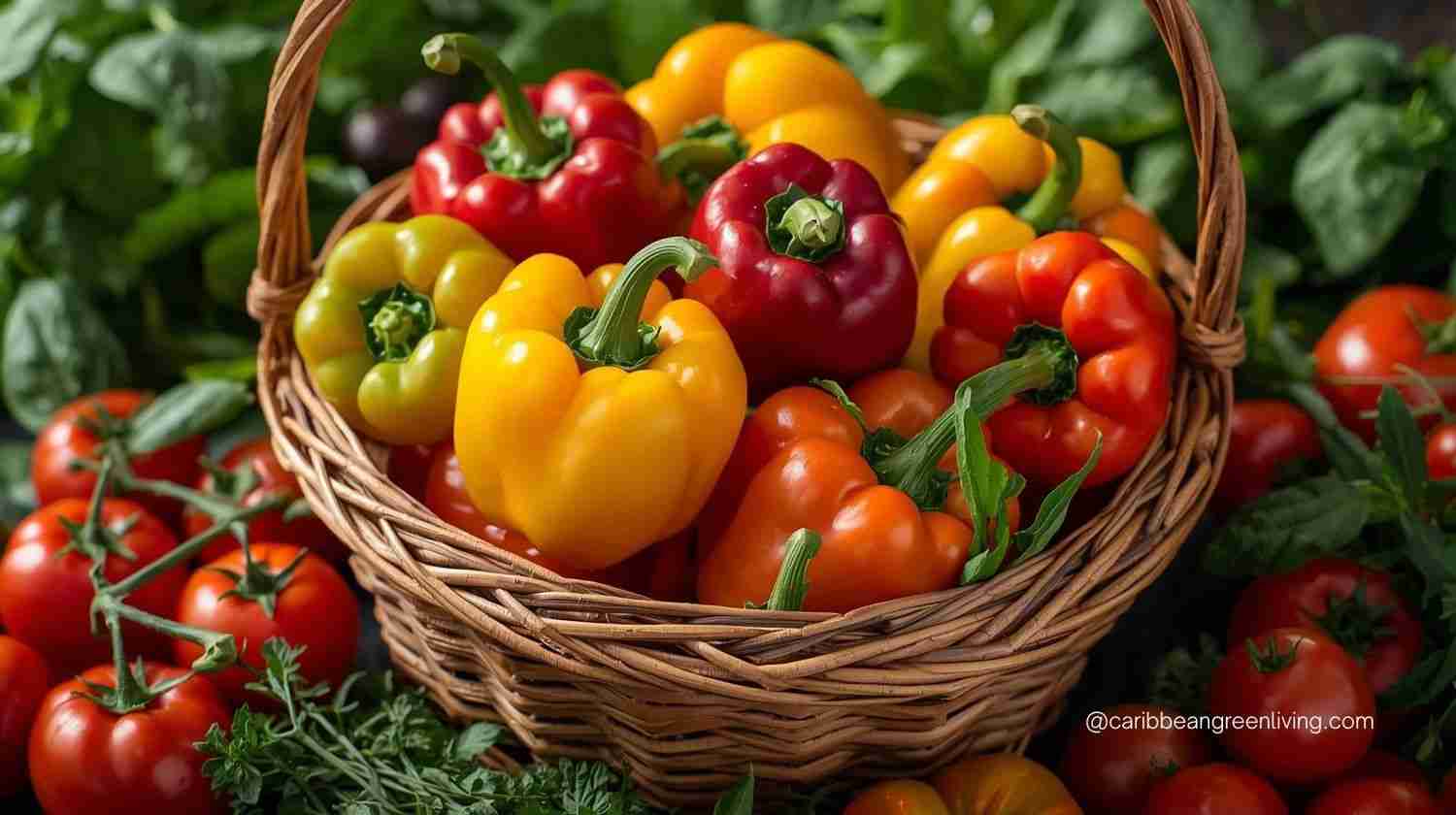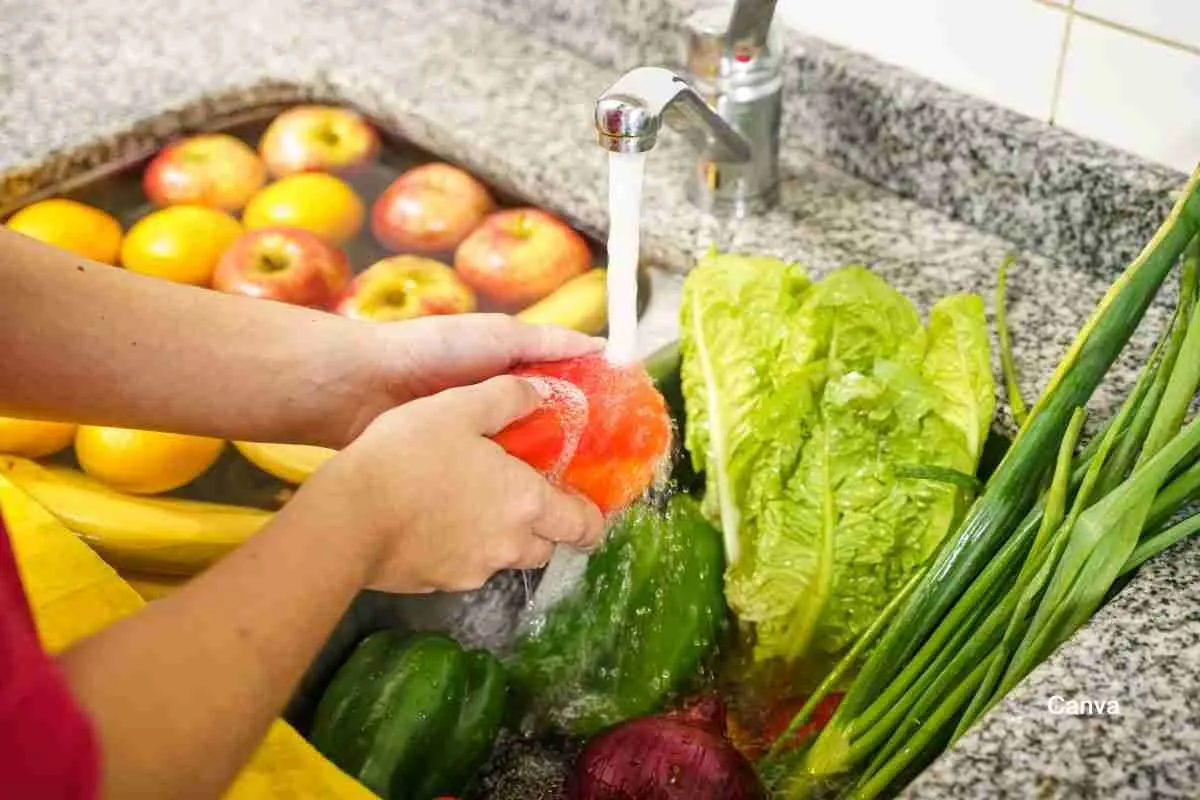The Hidden Superpower: Why Bell Peppers are Your Best Source of Vitamin C
When you think of Vitamin C, you probably think of oranges. But what if we told you that the colorful, crunchy bell pepper on your counter is actually a far more potent source of this essential nutrient?
Bell peppers aren’t just a vibrant addition to salads and stir-fries; they are a nutritional powerhouse, with their incredibly high Vitamin C content offering significant benefits for your immunity, skin, and overall vitality.
Here is a closer look at why bell peppers deserve the crown for Vitamin C, and how that powerful antioxidant translates into real-world health benefits.

The Vitamin C Shock: Bell Peppers vs. Oranges
It’s time to retire the orange as the sole symbol of Vitamin C. In fact, just one medium red bell pepper can provide over 150% of your daily recommended intake of Vitamin C, often surpassing the amount found in a medium orange.
The difference in color matters, too! As bell peppers ripen, their nutrient concentration increases:
- Green Peppers (unripe) are a good source, but contain the least.
- Yellow and Orange Peppers are significantly higher.
- Red Peppers (fully ripe) often boast the highest concentration of both Vitamin C and other antioxidants like beta-carotene.
Choosing the deepest, ripest color gives you the biggest nutritional punch.
The Benefits: More Than Just Immunity
While boosting your immune system is Vitamin C’s most famous job, its role in the body is far more extensive. Here are three major ways the Vitamin C in bell peppers works its magic:
1. The Fountain of Youth: Collagen Production
Vitamin C is essential for the creation and maintenance of collagen, the most abundant protein in your body. Think of collagen as the structural glue that holds everything together.
- Skin: Adequate Vitamin C helps maintain skin elasticity, reducing the appearance of wrinkles and promoting a youthful, glowing complexion.
- Joints & Bones: It supports the health of cartilage, tendons, and bones, aiding in wound healing and overall joint function.
2. The Energy Booster: Enhanced Iron Absorption
Iron is critical for energy and preventing anemia, but the plant-based form of iron (non-heme iron, found in spinach, beans, and lentils) is notoriously hard for your body to absorb. This is where Vitamin C steps in as iron’s perfect partner.
- The Power Couple: Vitamin C helps convert non-heme iron into a form that is easily utilized by your body.
- Practical Tip: Pair your Vitamin C-rich bell peppers with plant-based iron sources (like tossing them raw into a black bean salad or a lentil curry) to significantly increase iron uptake.
3. The Shield: Powerful Antioxidant Protection
Vitamin C is one of the most potent antioxidants available. It actively seeks out and neutralizes free radicals—unstable molecules that can cause oxidative stress and damage your cells.
By reducing oxidative damage, bell peppers and their high Vitamin C content may help:
- Reduce overall inflammation in the body.
- Support long-term cardiovascular (heart) health.
- Protect cells against damage that contributes to chronic diseases.

Beyond Vitamin C: The Colorful Difference
Don’t forget the other nutrients the colors represent! Bell peppers are also rich in:
- Carotenoids (Lutein & Zeaxanthin): Especially abundant in yellow and orange peppers, these compounds are critical for eye health, helping to protect your retina from damage and lowering the risk of age-related macular degeneration (AMD).
- Vitamin A: Red peppers contain high levels of beta-carotene, which your body converts into Vitamin A—another essential nutrient for vision and immune function.
- Fiber: They are naturally low in calories and a good source of dietary fiber, promoting healthy digestion and helping you stay full.
A Caribbean Staple: The Sweet Pepper in Global Cuisine
The health benefits of the bell pepper are enjoyed worldwide, perhaps most vibrantly in Caribbean cooking. While neighboring fiery cousins like the Scotch Bonnet provide intense heat, the sweet bell pepper is prized for its color and mild, sweet flavor, forming a crucial component in the region’s aromatic base. You’ll find it finely diced alongside onions, garlic, and herbs as the foundation for complex seasoning pastes, such as the essential Haitian epis, which gives depth to everything from stews and curries to marinades for chicken and pork.
It is also famously used in Trini Chow Chow, a tangy pickled vegetable relish, or as the vessel for savory, spiced ground meat fillings in Caribbean-style stuffed peppers. In any form, the bell pepper contributes essential freshness, flavor, and its signature burst of Vitamin C to island cuisine.
How to Maximize the Benefits
Vitamin C is sensitive to heat, so the best way to reap the maximum benefit from your bell peppers is to eat them raw.
- Slice them for dips like hummus or guacamole.
- Chop them into fresh salads or salsas.
- Use them as crunchy wraps or edible bowls.
Creative Ways to Consume Raw Bell Peppers
1. As the Vehicle (Replacing Grains/Chips)
Use the pepper’s sturdy shape and crunch as a low-carb, high-nutrient substitute.
- Dipping Sticks: Cut all colors into long, thin strips and serve as the ultimate crudité dipper for hummus, baba ghanoush, ranch dressing, or spinach dip.
- “Nachos” Base: Slice peppers into small, scoop-shaped pieces (like triangular chips). Use them to scoop up chili, guacamole, or salsa.
- Mini “Taco” Boats: Slice small bell peppers (or the longer, thinner sweet peppers) in half lengthwise and fill them with cold fillings like tuna salad, chicken salad, or a black bean and corn salsa.
- “Bread” Slices: Cut large, flat planks from a bell pepper and use them to sandwich cheese, deli meat, or avocado for a crunchy, gluten-free mini-sandwich.
2. Integrated into Cold Dishes (Salads & Bowls)
Dice, chop, or slice them to add texture, color, and nutrition to familiar dishes.
- Salsas & Pico de Gallo: Fine-dice red or yellow bell peppers and add them to traditional salsa recipes for sweetness and bulk, lowering the acidity usually provided by tomatoes alone.
- Grain Bowl Crunch: Add chopped bell peppers to cold quinoa bowls, rice bowls, or pasta salads. Their crunch holds up better than many softer vegetables.
- The Power Salad: Combine sliced peppers with dark leafy greens (like spinach, which is rich in iron) and a citrus-based dressing. Vitamin C maximizes iron absorption.
- Coleslaw Upgrade: Instead of just cabbage and carrots, julienne bell peppers into a vinegary, crunchy coleslaw.

3. Quick Prep & Snacking Ideas
Simple, grab-and-go options for busy days.
- Stuffed & Sprinkled: Cut the tops off mini bell peppers. Fill the cavity with cottage cheese, cream cheese, or goat cheese, then sprinkle with Everything Bagel seasoning or fresh chives.
- The Lunchbox Side: Simply core and quarter bell peppers and toss them into a lunch box as the main crunchy snack, often with a small container of peanut butter or sunflower seed butter for dipping.
- Quick Skewers: Thread chunks of raw bell pepper onto skewers with cherry tomatoes, mozzarella balls, and basil leaves for a quick Caprese salad on a stick.
- Infused Water: Add thin slices of red or yellow pepper to a pitcher of water along with mint, cucumber, or lemon for a subtle, refreshing, and colorful infusion.
4. Flavorful Bases (Sauces & Spreads)
Incorporating raw peppers into blended items for an undetectable nutrient boost.
- Savory Smoothies/Juices: While unconventional, a piece of red bell pepper adds sweetness and vitamins C and A to vegetable-based juices (such as those made with carrots and ginger) without negatively affecting the flavor profile.
- Cold Vinaigrettes: Blend a large piece of raw red bell pepper into a homemade oil-and-vinegar dressing to thicken it, enhance the color, and boost the nutritional value.
The Takeaway: Next time you are looking to maximize your daily Vitamin C intake, skip the glass of juice and grab a colorful, crisp bell pepper. Your immune system, skin, and energy levels will thank you!
The Colorful Conclusion: Upgrade Your Plate, Upgrade Your Health
Forget the conventional wisdom that only citrus fruits reign supreme. As we’ve seen, the simple, crunchy bell pepper—especially the fully ripened red, yellow, and orange varieties—is truly an unsung superstar of the produce aisle.
By delivering a massive dose of Vitamin C, these colorful fruits do more than fight off a cold; they actively help build crucial collagen for youthful skin, help your body efficiently absorb energy-giving iron, and protect your cells as powerful antioxidants.
The secret to maximizing these benefits is delightfully simple: eat them raw.
Whether you slice them for a hearty dip, dice them into a vibrant salsa, or use them as a crisp, guilt-free snack, incorporating raw bell peppers into your daily diet is a simple and delicious way to invest in your long-term health and vitality. Grab a handful, taste the rainbow, and start reaping the rewards of this mighty, hidden superpower today.
Reference






